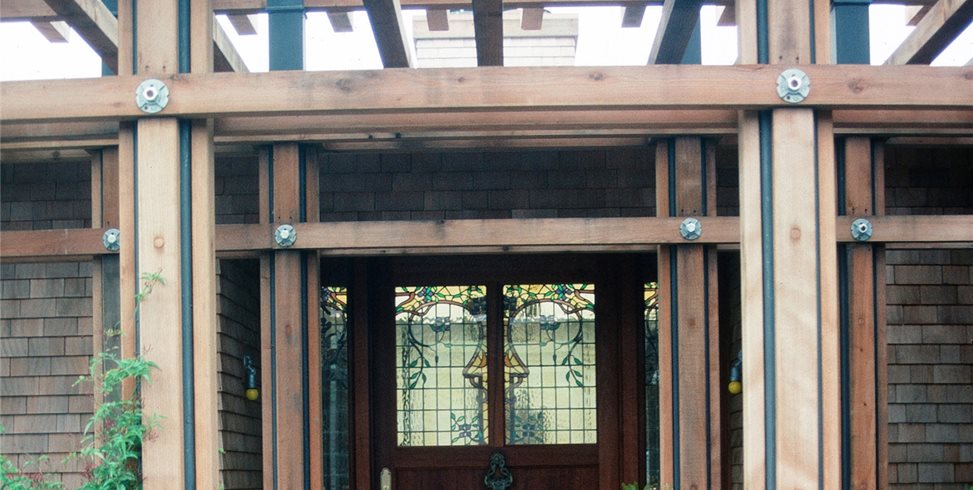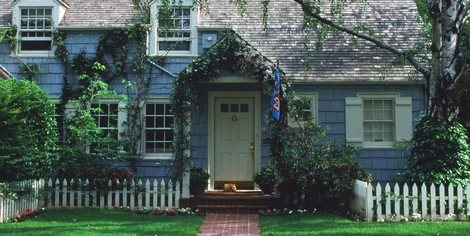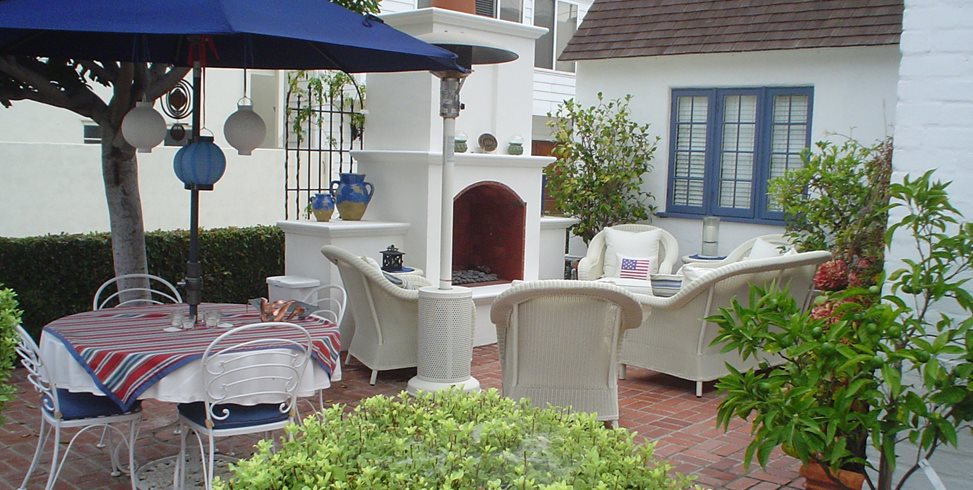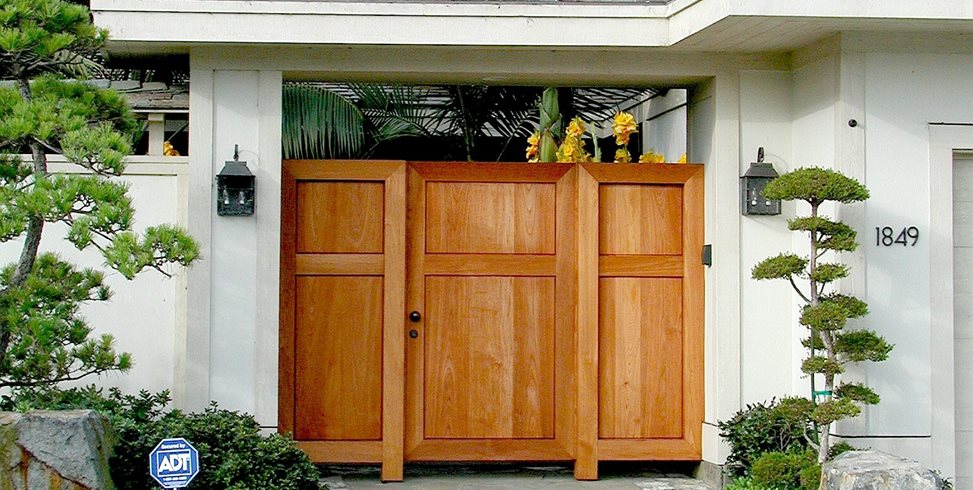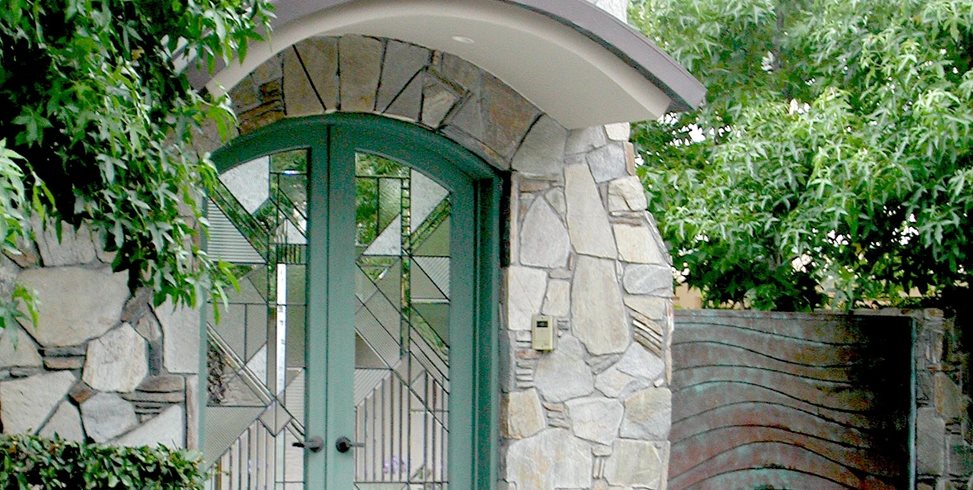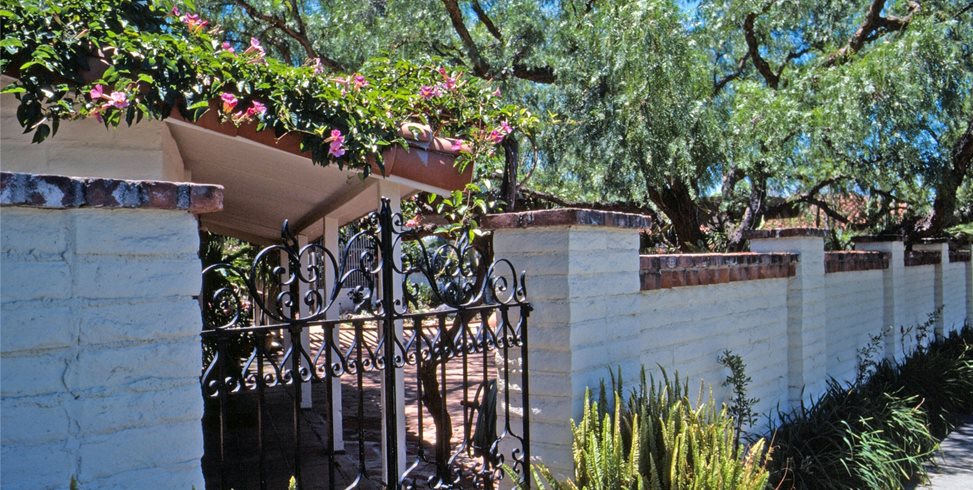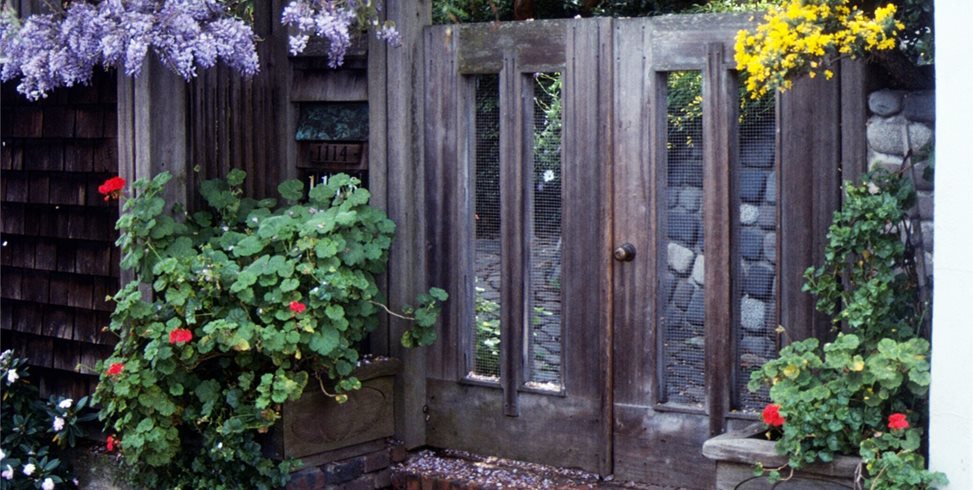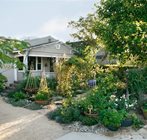Take Back the Front Yard
Three aspects of front yard design that will help you make the most of your spaceFront Yard Fencing - Design ideas for enclosing front yards
One of the newest trends in landscape design is reclaiming the front yard. As lots grow smaller, or as homeowners downsize to a more modest house, this additional land can become highly valuable. Understanding how to use the front yard can solve problems, while you work creatively with building codes, and implement optimal solutions to enhance the diversity of your home.
Solving Problems
Dogs In And Out
Nobody wants spots on the lawn, dieback on small shrubs and perennials and the gifts left behind by discourteous dog walkers. This front yard plague can spoil the most perfectly maintained landscape. The front yard may also provide space for your own dog to frolic, when the backyard is minimal.
Cut-Across
Homes with front yards located adjacent to corners, alleys, parking lots and other land uses can suffer from pedestrians and sometimes even vehicles cutting across the corner. It's also true with kids and bicycles. The result is compacted soil, crushed plants and discolored lawn.
Backyard Too Small
Homes set well back on the lot can result in a tiny backyard and oversized front. For those who wish to grow food gardens or create a more expansive play space for the kids, the front yard may be your only available space.
Need More Privacy
For some, pedestrians looking in a front picture window isn't a problem. For others it's such a serious issue they go to great lengths to obscure visibility. But privacy shades or window planting is not the idea.
View a slideshow of four functional front yards that are being used in untraditional ways. Get ideas for reclaiming your front yard and turning it into a veggie garden or outdoor living area.
Understanding Limitations
Front yards can be strictly governed by city codes or ordinances unique to your community or neighborhood. Planned communities can be even more restrictive, particularly if this is considered common area. For these projects, it pays to hire a designer who has worked with local codes that dictate what you can and can't do there. Experienced designers will be able to provide far more creative solutions.
Enclosure prohibited
The most important limitation is whether or not you can enclose the front yard at all. In some places this is strictly prohibited, but you can enclose the space with plants only.
Height limitations
Where codes allow you to enclose the front yard, there will be a height limitation. The most common restriction limits fence or wall height to 30 or 36 inches high. Some communities may allow you to go to four feet or higher.
Gateway variations
Arbor gates are those which involve an overhead structure, which is common with white picket fences. Often cities allow a gradual sweep of a wall or fence to rise to meet the top of the overhead, then back down on the other side to create a more massive gateway that better screens the entry behind.
Setbacks
When the house and garage are one single unit, the city deems the face of the house as the setback baseline. Nothing may be constructed in front of that line. In some communities you can come closer to the street if what you build becomes a part of the house itself.
Cone of vision
Every intersection requires clearance so that a person sitting at a stop sign can clearly see oncoming traffic. This is called the cone of vision. Nothing can be built within that area nor can you plant any larger shrubs or trees that could obscure the view. It's vital to know exactly where that cone of vision exists in order to establish your limit of work.
Design Opportunities
A good designer can lay out a nice front yard landscape, but a great designer can get it done while complying with a web of codes and restrictions.
Extension of architecture
The rules that govern the front yard typically cover what you can and can't build in front of the house. But when that new element is built into the house itself, usually the facade remodel, it becomes part of the architecture, not the landscape. Experienced designers know how to utilize facade opportunities to extend partitions and add gateways so that the building department sees them as house and thus allows greater heights etc. While this is a more expensive solution, in the long run it is worthwhile due to square footage liberated from the public domain to become enclosed private spaces or a courtyard.
Front yard fencing
Just as the white picket fence blends into the facade of a farm house or saltbox, your architecture will dictate the design and materials used to fence in your front yard. Always try and pull color and materials from the facade so that it's seen as a single contiguous space. The use of stone pillars, wrought iron and wood each offer a wide range of styles. Where small dogs must be enclosed, make doubly sure that any openings in the fence are not large enough to allow them to squeeze through.
Working with walls
In front yards, a wall can be a freestanding partition. Under these terms it is not viewed by the building department as a boundary wall but more like a retaining wall. The ability to utilize one or more low walls can help to solve many front yard problems, increase privacy, break former lawns into smaller manageable planting spaces, and suggest enclosure without actually doing so. The use of colored walls, unique masonry units and stone can make lower walls within the fence height designation one of the most useful ways to transform an ordinary landscape into a trendy upscale one while maintaining a limited budget.
Gateways
Building codes are often lenient when it comes to arbor gates. These constitute any overhead structure associated with the gate itself whether it's wood, block or poured concrete. The powerful draw that an arbor gate presents is undeniable, and its height must be sufficient to allow visitors to pass beneath it comfortably. A skilled designer knows how valuable a gateway can be for adding privacy to a small home's front yard. Its position and mass are all vitally coordinated to both solve problems and provide a stylish, dramatic entry when utilized with a wall, fence or privacy hedge.
High hedging
In swanky neighborhoods where property values are particularly high, the front yard is prime real estate. Too often fences are wholly prohibited, with the only option for enclosure or increased privacy being a tall evergreen hedge. There are no limits to the height of these hedges and when they kiss the back of sidewalk, every square inch of the front may be utilized.
- Pro Tip: To make high hedging able to keep a small dog within bounds, wait until it grows to four feet tall. Then install woven wire fence on the inside so that the hedge shrubs grow through the openings. It quickly becomes invisible and you will have a dog-proof enclosure without violating the ban on front yard fencing.

 Backyards
Backyards
 Front Yards
Front Yards
